Branching Out: A Multi-Location Restaurant Communication Strategy
Fuzzy Duck
January 1, 1970
Congratulations! Through hard work, creativity and dedication to quality, you have created a successful restaurant property. The restaurant is so successful that you have decided to branch out, bringing your thriving brand to more locations.
As you have no doubt discovered, the decision to branch out brings many new challenges and needs that simply didn’t exist when operating a single location. Business management, operations and logistics have all become more complex. Additionally, so has the communication strategy that is needed to promote a multi-location restaurant.
Brand Communication Structure
Avoid an identity and communication crisis by establishing a clear brand communication structure from the start. This is typically best done in a traditional parent-child brand family structure.
Parent
The parent is the spokesman of the brand, and promotes family (brand) messaging as well as events and features specific to each child (location).
When communicating about the brand, the parent company will include messaging that affects all locations: holiday messaging, new shared menu items, promotions and specials, etc.
The parent will promote unique events, specials and features of each of its children as needed. Just make sure to make each message unique and refer the audience to the specific child you are mentioning for details.
Children
Each location is a child of the brand and, in many cases, follows the same psychological traits of a traditional family unit. With some exceptions, each child follows the “it’s all about me” pattern of communication – only talking to their friends about the things going on with them specifically.
One such exception to this communication pattern is the announcement and promotion of new family members. Existing locations will have an established place within the community, along with many friends and points of communications to promote the new family member to. This type of promotion helps the new family member develop its own friend group. Announcement messaging is scaled back over time and as the family continues to grow.
Friends
Following the family analogy, think of each restaurant’s guests and connections as a friend. Friends will always want to hear about things going on with the location they are connected to and about the family as whole, but they are only selectively interested in the happenings with the other children (locations) in the brand family.
This is extremely important to consider when setting up your communication channels. You need the ability to speak to ALL of the brand’s family friends, as well as ONLY the friends of a specific location.
Brand Communication Structure – In Application
When it comes to applying the family communication structure you need to consider the different communication channels that you currently engage in and how they will be leveraged going forward. Below is just an example of how you may grow your brand structure.
Web Site Structure
The structure of your online presence will follow the same family communication structure mentioned earlier. The parent and each child should have its own website, allowing for independent control of content and messaging.
Parent Site
The focus of the parent site is to promote each location and provide business specific information.
Menus
The parent site may or may not contain menu/food information. The decision to include menu information will be influenced by a few factors
Menu Diversity – Does your product offering vary between locations? If there is not a lot of variance in the menus, you can consider including a menu section on the parent site. But, if the menus vary greatly from location to location, it is better to direct visitors to each location’s website and menu. One option for the parent site is to list only the common menu items, or provide clear disclaimers for location specific items.
Management Budget – Managing the content of your menu online and in print is one of the bigger ongoing expenses for a restaurant. Any change to menu items will need to be made in print and/or online. If this is a concern from a time/cost perspective you may want to consider only having menus listed on the individual location sites.
Contact Information
The parent site should have contact information listed for business inquiries and customer feedback. We also recommend directing visitors to their location of interest for comments and seating availability.
Employment
We recommend that all employment applications be filled out at the parent level. This helps ensure a consistent approach to the application process and a single point of data management for the business to manage.
The applicant should be able to indicate which location(s) they are interested in working at. The hiring manager(s) of each indicated location would be notified via email upon application submission.
It also provides a single talent pool from which a manager might search through for qualified applicants. Thus, allowing a qualified applicant to be considered for other locations than they initially applied for without requiring an additional application form to be filled out.
Our Locations
The parent site should provide a method for the visitor to find and click through to individual location sites. This can be done on a dedicated search page, through featured content on the homepage, on the contact page, or a combination of all three.
Reservations
We do not recommend taking reservations on the parent site. We do recommend having a landing page or featured content section within the site that directs the visitor to visit the location site for information and reservation requests.
Social Media and Email Signup
The corporate site should list their parent social media links as well as the social media links by each location listed on the site. The email signup form will allow the visitor to sign up to the brand list and all available location lists.
Gift Cards
We strongly recommend a global gift card system, as this creates a stronger brand presence and a better experience for guests. To that end, all gift cards should be purchased through the parent site.
Child Sites
Continuing the communication structure outlined in this document, the child site will only be concerned with communicating its own information. The child site will always feature a prominent link to the parent site but may or may not link to other locations.
Typically child sites are contained on separate domains that are a combination of brand name followed by the location name (businessminneapolis.com). Subdomains are also acceptable with the location being the subdomains (minneapolis.restaurant.com). Having the location name in the operating domain name is important as it helps to visitors to visit the specific location they are interested in when performing an online search.
Menus
Each location should have a dedicated HTML driven menu page. This allows for mobile and desktop visitors to quickly browse the menu with ease. The menu can be printed through the normal browser print option. Additionally a PDF version of the physical printed menu may also be linked at the brand parent’s discretion.
Contact
The contact page should contain written contact information for email and phone, as well as a contact form. Comments and questions are encouraged and contact messages can be distributed to the location manager as well as brand managers if desired.
Hours
The hours for each location may vary, and it is important to list the hours of operation, happy hours and holiday hours in prominent locations.
Private Dining – If Offered
Restaurants offering private dining should have a dedicated page/section for this purpose. This page will offer contact information, specialized menu options and general rules related to private dining.
Reservations
Reservation information is a primary content need for visitors and should be easy to find/navigate. Even if the location does not accept reservations, the site should address that with a specialized content box throughout.
For restaurants that do accept reservations, we recommend the use of an online reservation system. It is important to acutely remind the visitor which location they are making the reservation for.
Employment
We recommend that each restaurant maintain an employment page. This doesn’t have to be a primary link. But, can instead be located on secondary or tertiary menus of the site, as long as it is accessible and intuitively located.
The content of the page may vary based on what the restaurant is or is not seeking for staffing at the time. However, an application button should remain present. As noted earlier this button should direct the visitor to the parent site’s application form.
Social Media and Email Signup
Each location should prominently display links to their social channels. Brand family social links are also acceptable, but should not be featured as prominently.
The email signup form should have the subscription list of that location preselected as well as the parent brand list. The user should selectively add any other locations to as desired, but they should not be preselected.
Gift Cards
As stated previously, we recommend that gift cards be purchased on the parent site. However, each location site should have calls-to-action to purchase a gift card. Which, when clicked, opens a new browser tab and takes the visitor to the parent site’s gift card page.
Social Media Marketing Structure
The brand parent and each location should have their own social media channels. This will allow the organization to follow the family and friend pattern of communication discussed earlier – the parent promoting the family brand messaging and each child promoting their location specific messaging.
If you are just branching out from one location to two or more locations, the parent’s social media accounts will typically have to be newly created. In this case you will use the child’s friend group to promote the newly created parent brand’s channel with, “Like our brand channel for specials and announcements for all our locations.” Type of messaging. This type of messaging will coincide with the promotion of the second location and will scale back as the rest of the families social channels grow.
Example Social Channel Structure
Parent
- Facebook/brand
- Twitter/brand
- Instagram/brand
Each Child
- Facebook/brand-location
- Twitter/brandl-ocation
- Instagram/brand-location
HTML Email Marketing Structure
The email marketing structure will be configured a little differently than the social media channels. In this case you will manage everything under the brand parent’s account, but will create individual distribution lists for each location.
HTML Email Marketing Lists
- Brand Family
- Child Subscription List
- Child Subscription List
There are several benefits to this structure:
- Subscribes/unsubscribes will be managed from a single account – No exporting/importing between accounts for the latest subscribe list prior to each send.
- Family friends can manage their subscriptions to the brand family and each location from a single subscriber form.
- Better communication segmentation without duplication – Send messages to all family friends, or send messages to ONLY this location’s friend.
- Improved messaging coordination and timing – Your marketing team will be better informed on each location’s messaging and timing. Helping to prevent duplication of messaging or accidental inbox flooding with multiple location messages going out at the same time.
Wifi Marketing Structure
Whether socializing on Facebook, posting to Pinterest or communicating on Snapchat, today’s customers are constantly connected to the internet. Wifi marketing is all about extending your brand experience to your networked guests while providing you with valuable customer insight at the same time.
It works by providing a secure wifi access point that your customers can connect to. When joining the network, the customer will see a branded page that they must enter their contact information into, and agree to the terms and agreements of your network, for use. Once signed in they are able to use their social apps and services uninterrupted.
When it comes to the branding of the wifi network, we recommend each location uses the family brand. The branding should extend to the name of the network as well as a signup/login page shown when joining the network. When configured correctly with an appropriate service, your wifi marketing will provide you with customer contact information that can be used for re-marketing and sales metrics.




